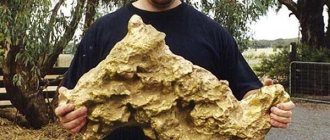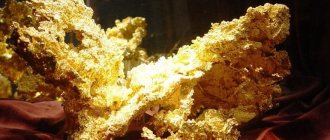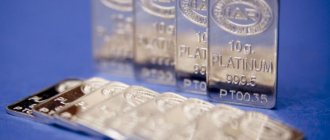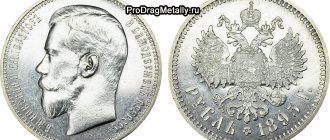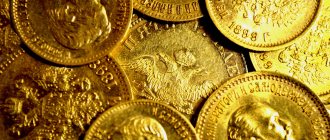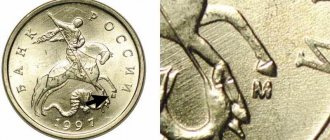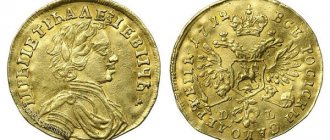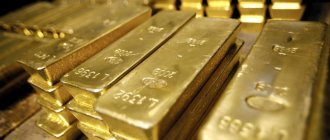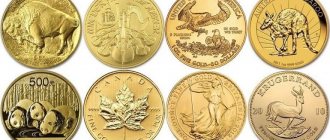Coins are banknotes of a certain shape, weight and denomination, most often made of metal. They date back many centuries and are highly collectible. The most expensive ancient coins cost numismatists millions of dollars.
The most expensive coin in the world “Flowing Hair”
Interestingly, the value of a coin among connoisseurs is determined not by its face value, but by its uniqueness.
History: The oldest coin in the world
The oldest coins appeared in China in the 12th century BC. e. They were cast in bronze and had regional significance, that is, each province issued its own coins, which were not valid outside its borders.
Coins in the modern sense were first invented by King Ardis, the ruler of the Asia Minor state of Lydia (modern Turkey) around 650 BC. e. They were made from an alloy of gold and silver. Later, metal money appeared in the Greek city of Aegina. From Greece they spread to Iran, Rome, and also among the barbarian tribes.
It is the Lydian staters (the so-called metal money of Lydia) that are the most ancient coins in the world. On one side of the coin (obverse) there is an image of a roaring lion and there is a square mark from the blow of a hammer during minting; on the reverse there is a dent resembling a stamp. One of these coins was sold for $3.25 million; the buyer wished to remain anonymous. The Lydian stater is a valuable acquisition and, of course, will decorate any numismatic collection. But oddly enough, the oldest coin in the world is not the most expensive.
Interesting Facts
Next, let's look at some historical events associated with the first ancient Russian coin:
- The coin plates were cast using folding minting molds, as is evident from the appearance of the spools.
- The average weight of the spool is 4.2 g; later this value was taken as the basis for the weight unit in ancient Rus'.
- The appearance of Russian coins contributed to the revival of cultural and trade relations with Byzantium.
- The model for Vladimir's spool valves was the Byzantine solidi made under the emperors Constantine VIII and Vasily II. Zlatniki were similar to Byzantine solidi in their weight and the location of the design on the coin plate.
- In 1988, the 1000th anniversary of Old Russian coinage was celebrated, and in honor of this event, a gold coin with the image of Prince Vladimir was issued.
- The minting of gold coins lasted only a few years during the life of Prince Vladimir, and after his death it never resumed.
The use of ancient Russian coins has exclusively commercial meaning, because the zlatnik was never used as an object of ritual, gift or reward.
The most expensive coin in the world
It has the romantic name “Loose Hair”. Its engraver was a certain Robert Scott. This is the first silver coin cast in the United States. Its denomination is only 1 dollar, minted from 1794 to 1795 at the Philadelphia Mint. During this period, just over 160 thousand coins were issued, some of which were immediately destroyed due to low quality. Today, approximately 2 hundred of these coins have survived.
The obverse of the coin depicts a woman with wavy hair falling loosely to her shoulders; above her head is minted the word “LIBERTY”, which means “freedom”. There are six-pointed stars on the sides: 8 on the left and 7 on the right, for a total of 15, which corresponds to the number of US states at the time of issue of the coin.
The reverse of the coin features a bald eagle, the heraldic symbol of the United States, in the center. The eagle is surrounded by a wreath of olive branches.
It acquired the status of “the most expensive coin in the world” in 2005, when it was purchased at auction by an unknown collector for $7.85 million. In 2013, this numismatic value confirmed its status when it was resold for $10 million, and at the same time set a price record.
Appearance of the goldenrod
On the obverse of the coin was a portrait of Prince Vladimir in a headdress with a cross in his right hand and his left lying on his chest. A trident was depicted on top - a characteristic sign of the Rurik family. Around the circle there was an inscription in Cyrillic that read: Vladimir is on the throne.
On the back of the coin was a figure of Christ, with the Gospel in his left hand and his right hand in a blessing position. Around the circle, as on the front side, there was also an inscription: Jesus Christ.
Second and third place
The Double Eagle is an American $20 gold coin. It was minted from 1850 to 1933. In 1933, Roosevelt carried out monetary reform, during which he abandoned the gold standard. According to his decree, these coins were withdrawn from circulation and melted down into gold bars.
Double Eagle Coin
There are about fifteen of these coins left in the entire world. Their location was tracked by American intelligence agencies and confiscated from their owners. Only miraculously one coin was preserved in the private collection of Briton Stephen Fenton. It is estimated at $7.59 million.
On the obverse of the coin, in the rays of sunlight, the Statue of Liberty is depicted, above which the word “LIBERTY” is stamped, surrounded by 46 stars according to the number of US states in those years. The reverse depicts a flying eagle.
In 2010, Brasher's old gold doubloon was sold at one auction for $7.4 million. This is a signature coin made by jeweler Brasher in 1787. It is the first US $1 gold coin.
Brasher's Doubloon
The product depicts an eagle with spread wings; the master’s initials “EV” are stamped on its chest. There are only 6 similar doubloons in the world, but on 5 copies the jeweler’s initials are minted on the eagle’s wing. They cost a little less - about $3 million.
Single 9
The last price of the coin is 4 million dollars . The history of its production is fascinating: during the Boer War, South Africa did not have the opportunity to produce a new stamp with the date 1899, and the government decided to use last year's stamp, correcting the date on it, for which the stamp was sent to Germany. However, due to the war, plans had to be changed, after which the mint staff simply stamped the number 9 at the end. The prototype was released in a single copy, then all items were dated correctly, and this coin acquired exceptional value. Collectors gave it the name Single 9, and its unusual history, the kind that numismatists love, contributed to an increase in value.
Not cheaper than a million
The Edward III or Double Leopard is an English antique gold coin that was in circulation for only 10 months, from December 1343 to June 1344. Its nominal value is 6 shillings.
This valuable artifact has a beautiful design: on one side there is a leopard standing on its hind legs, the inscription “MONETA RVPBLLE” is stamped around it, on the other side there is a cross and the inscription “REX EDOVARD”. That is, the literal translation sounds like “King Edward ruble coin.” Historians are still puzzling over why the medieval English coin was called the “ruble,” but for now it remains a mystery.
To date, only 3 such coins have survived in the world, each of which is valued at $6.8 million. Two coins are kept in a museum in Great Britain, the third is in a private collection.
True numismatists look for rare coins and are willing to give a lot to have the following coins in their collection:
- The Queen Elizabeth II is an amazing pure gold coin that was produced by the Canadian Mint. She weighs 100 kg! Its face value is $1 million. But the unique giant banknote was sold at the Dorotheum auction for $4 million. On one side there is a profile of the queen, on the other there is a maple leaf. Besides its enormous price, the Queen Elizabeth II is the largest gold coin in the world.
- The 1804 Silver Dollar is a coin from the collection of renowned numismatist David Queller. It was minted in 1834, although the year 1804 is mistakenly stamped on the coin. Its cost is $3,737,500.
- The Liberty Head is a very rare 1913 nickel coin worth only 5 cents - a coveted trophy for any numismatist. Minted in a very limited edition. To date, the location of only 5 coins is known - 2 in museums and 3 in private collections. In 2010, “The Head” was resold for $3.7 million.
- The Barber Dime is an American 10-cent coin designed by engraver Charles Barber. The obverse depicts Liberty, whose head is decorated with a wreath of ears of wheat, the year of minting is stamped below - 1894, on the reverse - the denomination “ONE DIME” surrounded by the same wreath. Similar coins were issued from 1892 to 1916 in large quantities by the mints of Philadelphia, New Orleans, Denver and San Francisco. But later they were withdrawn from circulation, and today only 9 dimes from 1894 remain in the world. In 2007, one of these coins went under the hammer for $1.9 million.
- "Sitting Liberty" - $1 coins are considered a real treasure among numismatists. They were minted in 1870, but for some reason were not registered by the mint. Only 11 such coins have survived to this day. The famous collector Louis Eliasberg owns one such coin in very good condition. It is estimated by experts at $1.3 million. The obverse features a seated Liberty with an American flag in raised hand, and the reverse features a bald eagle.
- "Dinar Hashimi" - dates back to 737. It is a numismatic rarity. The ancient coin is made of gold, is not of high quality due to its age, and was sold at an auction in Britain for $1 million.
Liberty Head Coin
Dinar Hashimi
So, the rating opens with a rarity of Arab origin - Dinar Hashimi. The approximate release date of the coin is 737, the cost is 1 million dollars . Despite its exceptional rarity and venerable age, the price of the rarity has not exceeded a million, but over time its value has been steadily increasing. At the time of their circulation, gold dinars were not rare, but only a few have survived to this day. Historians believe that if it were not for the pilgrimage of Umar ibn Abd al-Aziz, they would never have fallen into the hands of European and American collectors, but this is an assumption not based on facts. The irregular shape, uneven edges, and Arabic script on the obverse and reverse distinguish this coin from products produced in Europe and the USA.
Coins worth less than $1 million
The 1930 Australian penny is Australia's most expensive coin and the most expensive copper coin. The Melbourne Mint has minted just 6 of these proof quality coins with a mirror finish. It is not entirely correct to say that the coin is copper. It is made of the highest standard silver, but is coated with copper on top. One such coin is kept in the British Art Museum, in the Victoria and Albert Museum in London and in the Australian Art Gallery, the remaining 3 coins are dispersed into private collections. In 2005, one of these coins was sold for $517,345.
The Brazilian 5-cent coin is the “cheapest” on the list. It was minted in the 19th century in Brazil in honor of the coronation of the founder of the Brazilian Empire, Pedro I. The obverse depicts Pedro himself with a laurel wreath on his head. A total of 64 such coins were issued. By the way, Pedro really didn’t like their appearance. At an auction in Chicago, the coin went for 138 thousand US dollars.
There are other very valuable and rare coins with a unique history that numismatists are hunting for. They are ready to pay a huge amount of money for this treasure.
Physical characteristics of goldenrod
The diameter of the spool was 19-24 mm, and the weight was about 4-4.5 g. All currently known spools were minted with interconnected coin stamps. The size of the imprint for the front side of the coin corresponded to the stamp for the back side.
At the moment, 6 pairs of stamps are known. The inscriptions and images on them are very carefully executed, and in the same style. However, each stamp is different. According to the descriptions, it is known that three pairs of stamps were apparently made by the same person, as they were made very carefully.
The next pair is rather crudely made and the lettering on the front is missing a letter. The remaining two pairs of stamps were most likely copied from the previous ones. The master, most likely, was inexperienced, since he retained only the general appearance of the coin, and such a detail as the position of Christ’s hands was changed. The letters of the inscription are also not located quite correctly, not the same as in previous versions of the spools.

